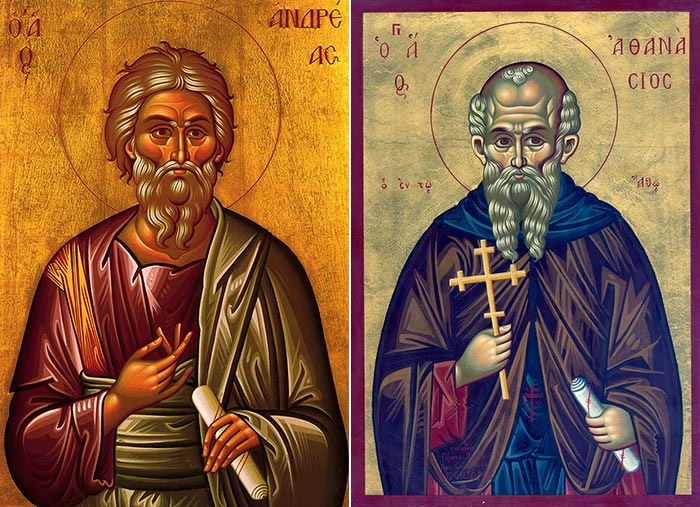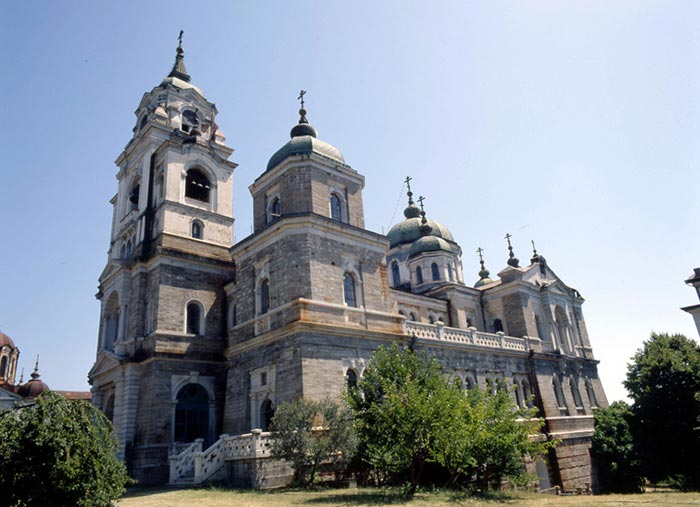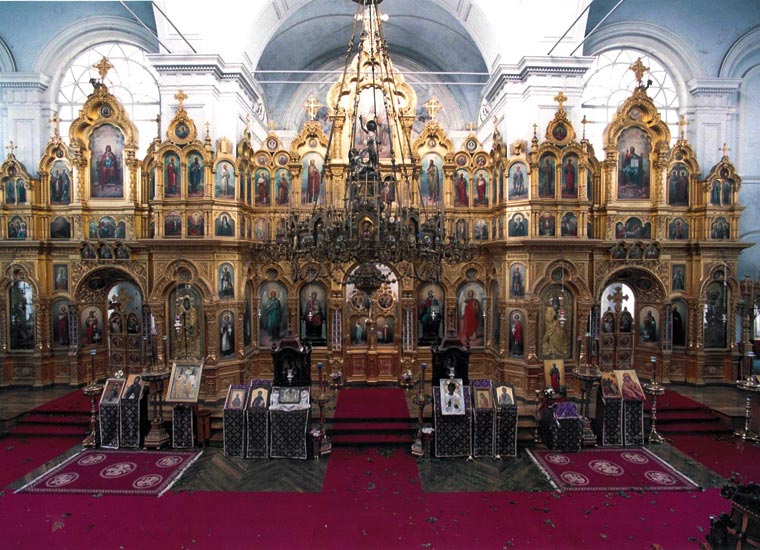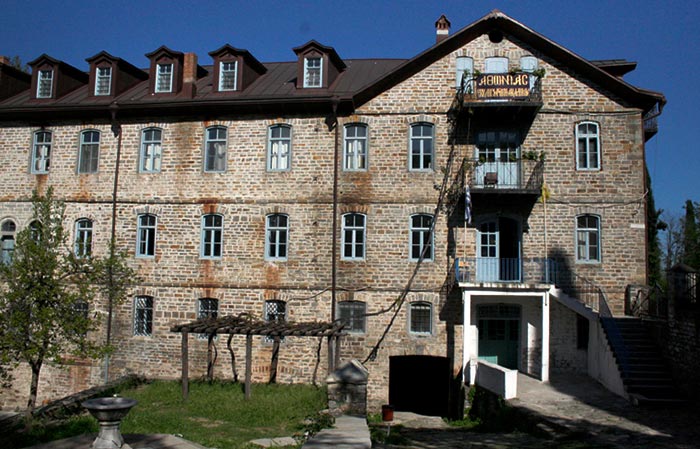
Skiti Of Agios Andreas
Not far from Karyes (5 min walk) the skiti of Aghios Andreas is located. Saint Athanasios the Athonite found his first monastic home on Athos, and here in the region of the Skiti, we hear mention of a Monastery named variously "Xystre" or "Xestou" from the 10th until the 15th centuries. The history, however, of the region begins to take a more definite shape with the arrival of the founding father Athanasios Patellaros.
Athanasios was born in the late 16th century in Crete, and in that turbulent period of Turkish rule he became Patriarch of Constantinople. His tenure, however, was brief, and in his retirement, he came to Athos, and finding here a Skiti dedicated to St. Anthony the Great, he refurbished and renovated it.

The spiritual bond of the region with Constantinople was further strengthened with the arrival here of another retired Patriarch, Serapheim II. Serapheim demolished the old building and built on its site a new structure, now dedicated not just to Saint Anthony but also to the Apostle Andrew. The change was significant. Serapheim, as Patriarch, had declared as Patronal festival of the Patriarchate the feast of Saint Andrew, who, according to tradition, preached the Gospel in Byzantium and ordained the first Bishop of the city, and after his retirement he modeled his new Athonite Church on the Great Cathedral of the Holy Wisdom (in miniature), and dedicated it to the Apostolic founder of the Church of Constantinople.

As the visitors walk toward there the first thing they see is an imposing dome of Russian style, then numerous abandoned buildings show up. The Skiti is usually called by monks Sarai, as during the Ottoman Invasion, the representative of empire, aga had in the keli of Aghios Andreas his quarters.
In 1824 the keli was given to one Russian monk Bessarion, who used it as a base for arrival of numerous Russian monks in the attempt of Tsar then Russia to turn Mount Athos in Russian controlled territory. That is how the skiti was organized and heavily sponsored had grown very fast, counting 800 monks in the beginning of 20th century. The largest in Mount Athos church was built in skiti. It is 60 m long, 33 m wide and the dome is 29 m tall. The iconography does not remind at all of Byzantine church, it is in Baroque style. The interior is heavily gilded. Herein was, and is, treasured the forehead of Saint Andrew.

Creating the icon of Virgin Mary, the painter used the technique trompe l'oeil, (French for 'trick the eye')- is an art technique involving extremely realistic imagery in order to create the optical illusion that the depicted objects appear in three dimensions, instead of actually being a two-dimensional painting. Moving around the church the visitor has the filling that the Virgin is following him with her eyes.
After the revolution in 1917, the expansion of Russian monks stopped. After 20 years of desolation, in 1992 a new, Greek-speaking brotherhood brought new life to the Skiti, and in 2001, the coming of several young Monks, with new Prior Archimandrite Ephraim, brought promise of a bright and hopeful future. In France, the society is created in order to help the maintenance and reconstruction of the skiti.

Next to the skiti The Athonias Ekkliastiki Academy, Greek Orthodox educational institution is located. It was founded at 1749 in Mount Athos. The school offered high level education, where ancient philosophy and modern physical science were taught. With the establishment of the Athonite Academy the local monastic community took a leading role in the modern Greek Enlightenment during the 18th century. It aroused the hostility of more conservative circles and was shut down in 1821, but reopened in 1842. The Academy's function was also suspended in 1916–1930 and 1940–1953 due to the World Wars.
Today in Academy study children from all over the world and Greece, only boys obviously. They prepare for military and church service.


